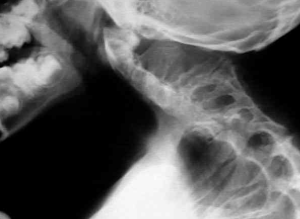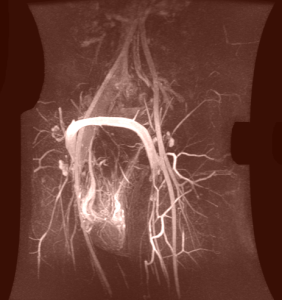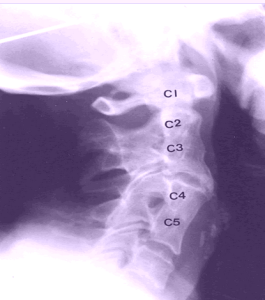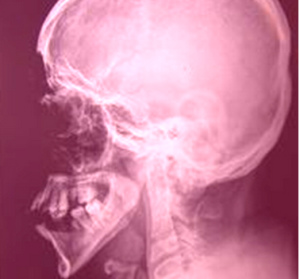Klippel-Trenaunay syndrome is an uncommon vascular disease that is present from birth and which a limb may display port wine stains, excessive growth of soft tissue or bone and varicose veins. The affected limb may be longer, bigger and/or warmer than usual. The cause of Klippel-Trenaunay syndrome is not known.
The symptoms for Klippel-Trenaunay syndrome may differ from one person to another and may include signs such as skin infection, vaginal or rectal bleeding, bleeding from the affected limb, and blood in urine. The individual with Klippel-Trenaunay syndrome may experience blood clots, pain of the limb, seizures and anemia.
The treatment is aimed at alleviating the symptoms and preventing the complication that result from Klippel-Trenaunay syndrome
Symptoms of Klippel-Trenaunay syndrome
Klippel-Trenaunay syndrome is characterized by the appearance of the three major symptoms discussed below:
- Presence of port wine stains, i.e. reddish-purplish birth marks associated to the blood vessels.
- A port wine strain refers to a form of hemangioma. It has a very striking appearance and looks like port-wine or dark violet colored lesions that have almost linear borders and are usually flat or a bit elevated as compared to the adjacent normal skin. One usually cannot gauge the depth of such lesions, but they rarely affect the bones and muscle. Port wine stains are generally present on the affected limb which may also display hypertrophy.
- Vascular abnormalities like varicose veins
- Individuals affected by Klippel-Trenaunay syndrome develop varicose veins that are usually congenital and look like a big shallow vein that begins at the lower part of the legs and goes all the way up till the buttocks. On occasions, the affected vein may become obvious only after the infant grows older.
- Excessive growth of the bones and/or soft tissue, which primarily involve a single limb
- Asymmetric limb hypertrophy is a condition wherein one of the limbs is larger as compared to the other. A person affected by Klippel-Trenaunay syndrome may have either an arm or a leg that is bigger in size as compared to the other arm. The leg is more commonly affected than the arm. In rare cases, two limbs may be affected by excessive growth along with/or hypertrophy of a section of the trunk or a buttock.
In certain cases, people with Klippel-Trenaunay syndrome may develop an irregular link between a vein and an artery. This condition is referred as Parkes-Weber variant of Klippel-Trenaunay syndrome. It results in the development of many fistulae, which increase the risk to cardiac failure if left untreated.
There are many other symptoms that may be experienced by individuals with Klippel-Trenaunay syndrome, beside the three major abnormalities. The other irregularities may involve the digits or the unaffected limb, and is generally uncommon as compared to the primary symptoms. The infrequent symptoms include the following:
- Underdevelopment of a limb
- Webbing of some digits
- Toes and fingers that may be abnormally small or large
- Missing or absent digits
- Presence of additional digits
Other symptoms of Klippel-Trenaunay syndrome that do not affect the limbs include the following:
- A disproportionately small or large head
- One side of the face may be larger or smaller as compared to the other side
- Individuals affected by Klippel-Trenaunay syndrome are usually born with normal intelligence. However, in rare cases hemangioma may be present in the brain which can increase the risk to seizures and/or eventually cause mental retardation.
- The vascular deficiencies may result in damage of various internal organs such as the urinary tract and/or the intestinal tract.
- The eye may be prone to ocular abnormalities such as cataracts or glaucoma
- There is also increased risk to bleeding
Causes of Klippel-Trenaunay syndrome
The cause of Klippel-Trenaunay syndrome is not known. Most cases of the disease are random and sporadic.
The condition generally does not run in families, but a few current cases have pointed otherwise.
It is believed that the defect of Klippel-Trenaunay syndrome is associated with the regulation of angiogenic cells. It is also though that any injury to the developing fetus can result in excessive vascular pressures, compression, etc. which in turn can result in the development of the many symptoms of Klippel-Trenaunay syndrome.
Klippel-Trenaunay syndrome treatment
There is no known cure for Klippel-Trenaunay syndrome. The treatment is focused at reducing and correcting the signs and symptoms of the condition as well as prevention the various complications that may arise.
Some of the treatment methods are as follows:
- Lifestyle changes such as use of compression apparels and orthopedic shoes for improving functionality
- Antibiotics for treating infections
- Compression therapy which involves the use of elastic garments or bandage-wraps on the limbs affected by Klippel-Trenaunay syndrome to prevent varicose veins, swelling and skin ulcers
- Physical therapy and massage to alleviate swelling of the arms and legs, and inflammation of the blood vessels
- Blocking of blood flow via the use of tiny catheters into the arteries or veins
- Epiphysiodesis to stop overgrowth of the lower limb affected by Klippel-Trenaunay syndrome
- Laser therapy to lighten the skin affected y port-wine stains
- Surgery to reconstruct or remove the affected veins
Klippel Trenaunay syndrome pictures



